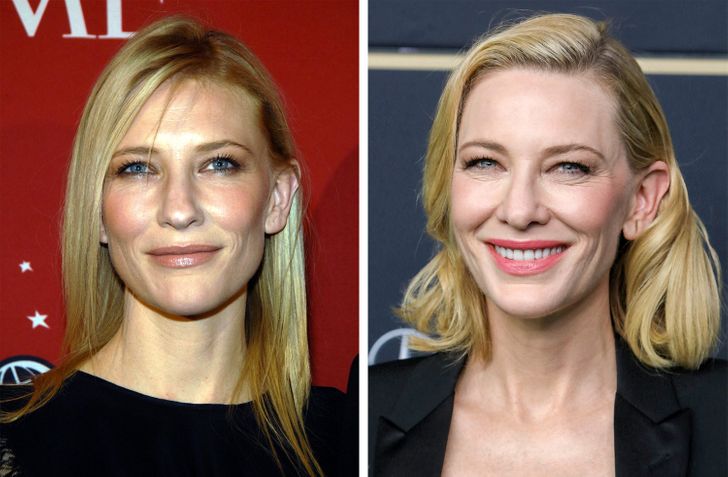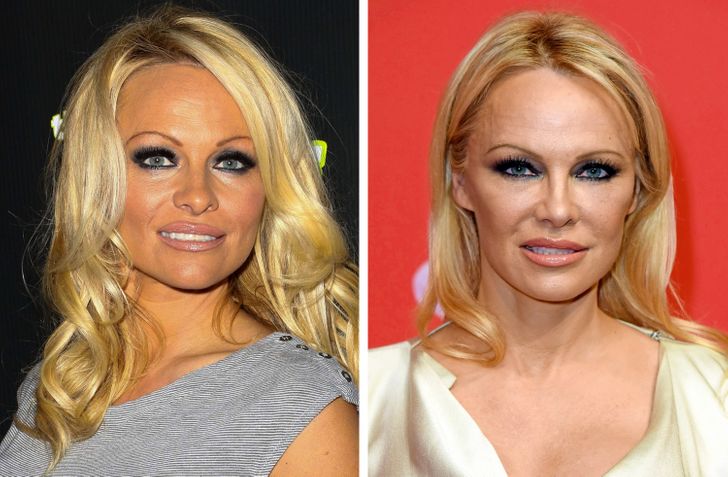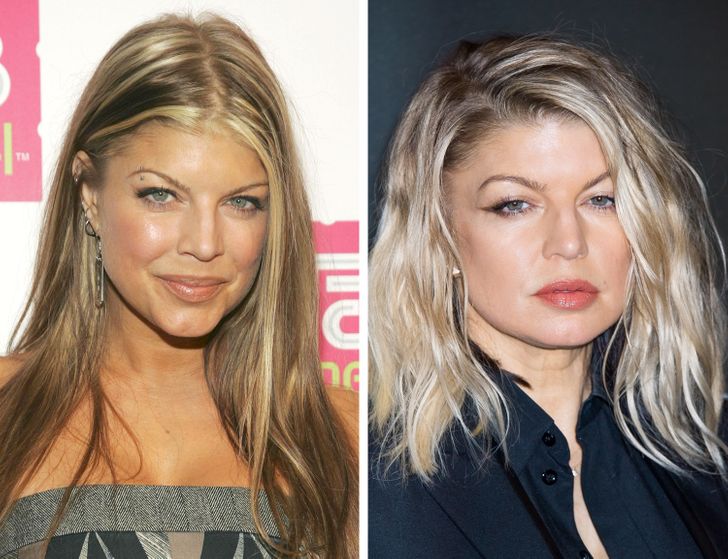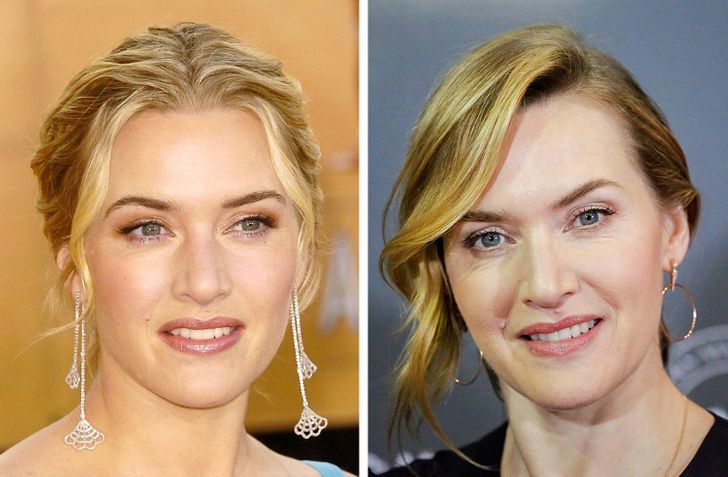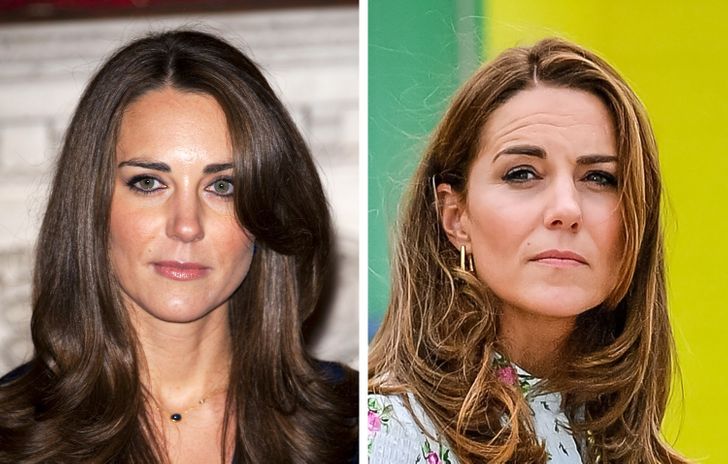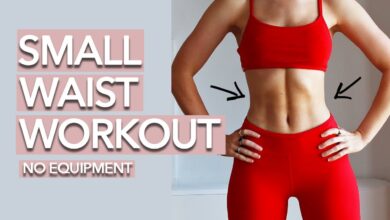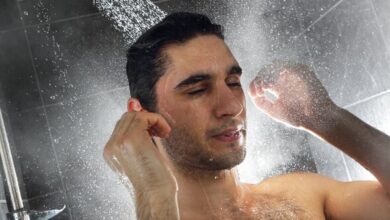The earlobes are also an age
indicator, just like the hands and the neck. As surprising as it is, women care about them much less than about other parts of the body. Unfortunately, earlobes also lose their thin fat layer and elasticity. As a result, they get stretched out and the love for big and heavy earrings worsens the situation.
6. The brow ridges are lowered, the look becomes less open.
When we are young, good skin tension holds our eyebrows in place and doesn’t allow them to “slide” down. But with
age, the collagen that sustains the elasticity and firmness of our skin is no longer produced as actively, and the facial muscles weaken and sag because of gravity. As a result, our brows gradually
move down, being pressed by those muscles, and start to hang over our eyes, which gives our face a grumpy look.
7. The “triangle of youth” gets inverted with its base down.
When we are young, the shape of our face is reminiscent of a triangle with the apex directed downward and the base along the forehead. It’s the so-called “
triangle of youth.” But the situation changes with age — it turns upside down with its base down.
The subcutaneous fat layer “slides” down the face over the years, the cheeks lose their former elasticity, and we get nasolabial folds. As a result, we no longer look as young as we did before.
8. The complexion fades and the skin loses its luster.
It’s impossible to not notice that the complexion
loses its healthy and glowing look, and becomes duller with age. The main reason is the decreased synthesis of collagen and elastin. Also, insufficient or improper care, lack of sleep, fatigue, an unhealthy diet, and bad habits contribute to this process too.
9. The eyes and mouth corners move down.
The
drooping corners of the lips and eyes give the face a slightly tired look. This is especially relevant for those who don’t smile often — their facial muscles that support the corners of the mouth weaken much faster. The skin around our eyes also loses its elasticity and tone over the years, weak tendons and muscles in this area can no longer “hold” the corners of the eyes like they used to.

